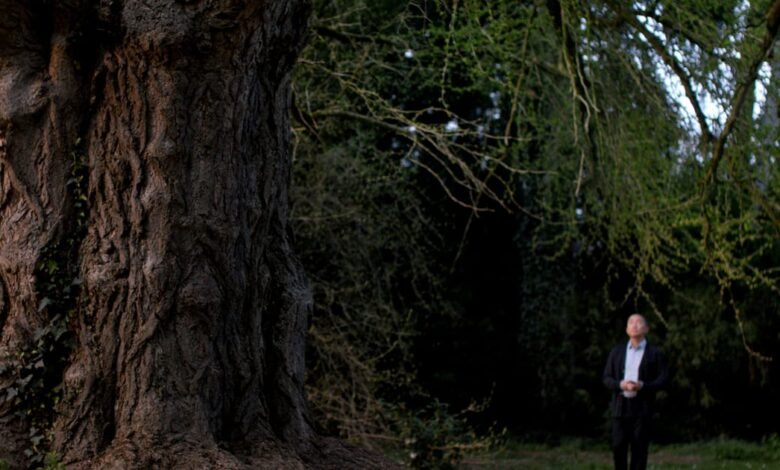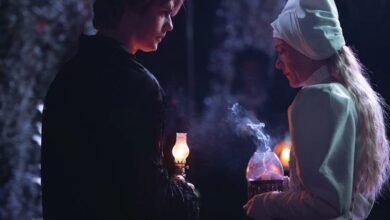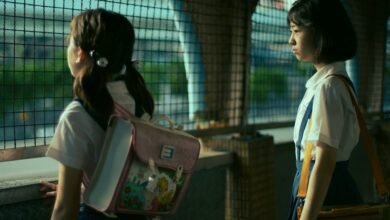

It’s a truism to point out that trees, plants, rivers and all flora and fauna contain as much lifeforce as any human. Fortunately, Hungarian director, Ildikó Enyedi, takes this perspective as a jump off point for a sophisticated if meandering meditation on how developing a shared language (between humans and the natural world, as well as between our fellow humans) is not a given, but rather is a sublime, spiritual matter born out of patient and careful observation.
An ancient ginkgo tree on the grounds of the world’s oldest university, The Philipps University of Marburg in Germany, is the only constant feature across three timelines as three different outsiders pursue private preoccupations with little company save for the titular silent friend. In 2020, a neuroscientist from Hong Kong, Tony (Tony Leung), chooses to stay at the university, rolling around like a lonely marble, after the Covid-19 pandemic turns it into a ghost ship. His research into babies’ brains segues into measuring the micro movements emitted by the ginkgo tree. Surveilled by a suspicious groundskeeper and ditched by an assistant, he is empowered by Zoom conversations with a French researcher (Léa Seydoux in an incongruous cameo).
Get more Little White Lies
This tree has been there since 1832, and so it was there in 1908, when the university admitted its first female student. Grete (Luna Wedler) triumphs despite the male interview board trying to humiliate her with a niche hazing ritual based on the sexual promiscuity of plants. To make ends meet, Grete finds work as a photographer’s assistant and this brand new form of capturing – or is it doctoring? – reality slots neatly into the film’s preoccupation with bearing witness.
The most gorgeous sequences take place in 1972 as foxy firebrand Gundula (Marlene Burow) invents an early version of the machine that Tony will use to measure the movements of the ginkgo tree. She is using it to chart the mood of a single purple geranium, beheld by the infatuated gaze of Hannes (Enzo Brumm), a shy yet steadfast student prone to lying in fields reading Rilke. When she goes on a trip and entrusts Hannes the geranium with a stern handover on how to keep the experiment alive, he flourishes in this relative solitude, experiencing the flower as a companion and a cheerleader.
Gergely Pálos’s cinematography makes us feel the intimacy of watching someone who is watching you. The desire between Gundula and Hannes is intense, but rather than act on it, they look at each other, trying to understand what makes the other tick. In heady, sun-drunk sequences, the camera focuses on the movement of a hand or sunlight catching body hairs. These scenes are so alive that it is a wrench to leave them for the other timelines which tend to feel stiff and academic in contrast.
There are tenuous yet entertaining attempts to link this with the eroticism of plants. Indeed, the film is bookended by time-lapse footage of a seedling pushing through a bulbous sac. Enyedi roots her characters’ bodily urges in nature and there is something that Tony Leung does in his climax that represents an inverse of his reserved character in In The Mood For Love for it shows pure liberation.




